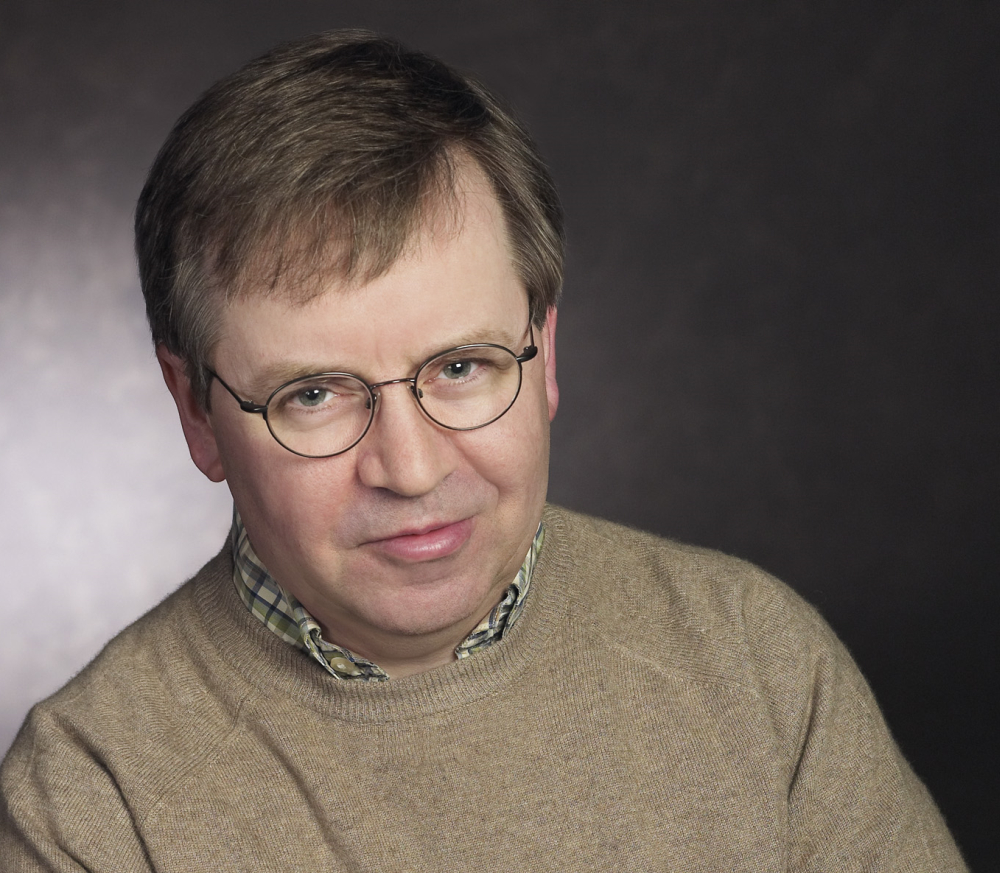Concert Review: Otis Taylor at Dazzle
Electric banjo? Check. Cello? Check. Synthesizer? Check. A couple of electric guitars and an electric bass? Check. OK, Otis Taylor is ready to play some blues. No, it’s not the typical instrumentation for a blues show. But Otis Taylor doesn’t put on a typical blues show. Much of Taylor’s blues is based on a single chord drone he calls Trance Blues which creates a hypnotic effect, somewhat akin to the North Mississippi Hill Country blues or the blues of John Lee Hooker.
 Otis Taylor with his electric banjo
Otis Taylor with his electric banjo
Taylor began his concert at Dazzle Thursday night with an explanation of his first instrument of the evening; an electric banjo. He said he had a more traditional round acoustic banjo, “but this one sounds better,” he said. It looked a little like a Fender Stratocaster, but it only had four tuning pegs at the head. It had another tuning peg halfway down the neck, like an acoustic five-string banjo. He told the crowd that the banjo originated in Africa, not Appalachia. Taylor himself had been under that misapprehension and for a long time refused to play the banjo even though it was his first instrument. He believed it to be associated with a racist part of the country. He changed his mind, however, when he learned the banjo’s true origin.
That sense of social justice also informs Taylor’s songwriting and song selection for his concerts. Thursday night, he kicked off with “Ten Million Slaves.” “Hands on Your Stomach” was about a slave girl’s dream. Elsewhere, he has sung about the injustices heaped on North America’s indigenous population. My World Is Gone (Telarc, 2013) was an album he recorded with Native American Mato Nanji of the band Indigenous. The songs addressed injustices suffered by Native Americans.
 Taylor ditched the electric banjo after the first few songs and switched to electric guitar. Throughout the set, he played three different guitars, two Fender Stratocasters and a Gibson, varying the tone and timbre through the set. The other two guitarists, J.P. Johnson and Colin traded off between rhythm and soloing. Given the one-chord drone of most of the songs, the solos tended to convey a compact intensity.
Taylor ditched the electric banjo after the first few songs and switched to electric guitar. Throughout the set, he played three different guitars, two Fender Stratocasters and a Gibson, varying the tone and timbre through the set. The other two guitarists, J.P. Johnson and Colin traded off between rhythm and soloing. Given the one-chord drone of most of the songs, the solos tended to convey a compact intensity.
 Johnson left, Colin right
Johnson left, Colin right
The electric banjo looked and sounded a lot like an electric guitar, so it was the cello that stood out as the most unusual blues instrument. Taylor showed obvious affection for Beth Rosbach, one time asking his question, “Why cello?” Answer: “Beth.” She soloed several times and brought a bit of a classical feel to the proceedings and a touch of soaring, majestic overlay to the trance-inducing backing.
 It was a sit-down show – for the musicians. Taylor explained that he used to stand, but at 75, he now finds sitting more appealing. The band member who had the most trouble sitting still was keyboardist Brian Juan. He bounced between his synthesizer rig on one end of the stage and the grand piano on the other. As a rhythm player in the trance tunes, he created brooding atmospheres and occasionally synthesized punctuation. But when Taylor turned him loose on a solo, he put his whole body into it; dancing back and forth, head rolling, endless facial expressions, maniacal pounding on the keyboard, and frequent glissades.
It was a sit-down show – for the musicians. Taylor explained that he used to stand, but at 75, he now finds sitting more appealing. The band member who had the most trouble sitting still was keyboardist Brian Juan. He bounced between his synthesizer rig on one end of the stage and the grand piano on the other. As a rhythm player in the trance tunes, he created brooding atmospheres and occasionally synthesized punctuation. But when Taylor turned him loose on a solo, he put his whole body into it; dancing back and forth, head rolling, endless facial expressions, maniacal pounding on the keyboard, and frequent glissades.
Together, the ensemble created a churning, urgent soundscape with the three guitar attacks laying down the incessant rhythm with one of those three or the cello or keyboards soaring above or subtlety bubbling in the mix. Despite the absence of drums, the music was undeniably rhythmic to the point that it was easy to overlook the percussive void. The overall effect, at times, was a gradually morphing soundscape somewhat similar to minimalist composers such as Steve Riech and Phillip Glass. But much bluesier.
 Taylor is a prolific songwriter and most of the tunes he played Thursday night were his. An exception was “Hey Joe,” by Billy Roberts, popularized by Jimi Hendrix. Taylor recorded two versions of that song on his album Hey Joe Opus/Red Meat (TranceBlues Festival Records, 2015). Thursday night, that one turned into an opportunity for each band member to stretch out on a solo.
Taylor is a prolific songwriter and most of the tunes he played Thursday night were his. An exception was “Hey Joe,” by Billy Roberts, popularized by Jimi Hendrix. Taylor recorded two versions of that song on his album Hey Joe Opus/Red Meat (TranceBlues Festival Records, 2015). Thursday night, that one turned into an opportunity for each band member to stretch out on a solo.
 The blues Otis Taylor plays is not your standard-issue Delta blues or Chicago blues or Texas blues that are far more common. His is a unique take on a musical form that some people, including musicians, find too confining. Taylor provides a fresh take, something a little bit different on the blues-landscape.
The blues Otis Taylor plays is not your standard-issue Delta blues or Chicago blues or Texas blues that are far more common. His is a unique take on a musical form that some people, including musicians, find too confining. Taylor provides a fresh take, something a little bit different on the blues-landscape.
The show had two opening acts, albeit brief. The first was Harry Tuft, longtime director of the Denver Folklore Center, who played one song. Tuft’s establishment is the place where Taylor first learned to play the guitar, banjo, and harmonica. Obviously, Taylor still has affection for Tuft and his organization.
 The second opening act was the duo of Selasse and Atta Addo, two African musicians. They played two songs, the first of which they played in the finger-picking tradition of West Africa. They explained that the guitar was introduced to Africa by freed slaves returning to their home continent, ironically, going in the opposite direction as the banjo, making for an unintended cultural consequence.
The second opening act was the duo of Selasse and Atta Addo, two African musicians. They played two songs, the first of which they played in the finger-picking tradition of West Africa. They explained that the guitar was introduced to Africa by freed slaves returning to their home continent, ironically, going in the opposite direction as the banjo, making for an unintended cultural consequence.

Otis Taylor
May 16, 2024
Dazzle, Denver
Review and photography by Geoff Anderson
Stay connected to KUVO’s programs and our community! Sign up for the Oasis E-News today!
Become a Member
Join the growing family of people who believe that music is essential to our community. Your donation supports the work we do, the programs you count on, and the events you enjoy.
Download the App
Download KUVO's FREE app today! The KUVO Public Radio App allows you to take KUVO's music and news with you anywhere, anytime!


